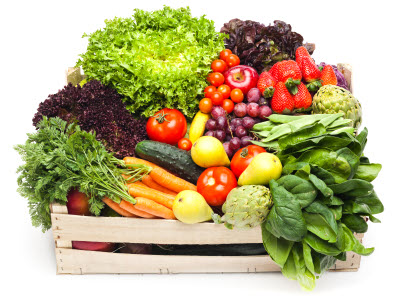
Despite the known health benefits of eating vegetables, fewer than 1 in 10 adults meets the daily vegetable intake recommendation, which is a measly 2 – 3 cups per day.
Chances are you know that eating veggies is “good for you”. But why?
- Vegetables are nutrient-dense and low-calorie.
- They’re a rich source of fiber and loaded with a variety of vitamins, minerals, and health-promoting phytonutrients.
- It would be difficult or impossible to get that amount and variety of nutrients from other higher-calorie food options.
- Having a complete array of micronutrients (like calcium, magnesium and other electrolytes) is necessary for fully functioning body processes, like transporting oxygen and sending electrical signals to muscles.
With the right amount and variety of vegetables, you’ll feel effects in muscle coordination, appetite regulation, and mental clarity.
- Too little and you might:
- not feel satisfied or full after your meal
- not recover well
- feel low energy or fatigue
- feel excessive or long-lasting muscle soreness or cramping
- feel brain fog or think slow
- have irregular bowel movements
- Too much and you might:
- feel overfull after your meal
- feel bloated or constipated
- When you eat the right amount of vegetables (aka the Goldilocks amount), you:
- feel satisfied from meals
- feel energized all day
- feel clear headed and mentally coordinated
- recover well from workouts
- have smooth moving digestion
- maintain a healthy weight

Re-source: Receptive
able or willing to receive something, especially signals or stimuli
How much is “enough” vegetables?
- The average recommendation is 2 – 3 cups per day.
- “Enough” is personal, and only you can know what’s enough for you.
- There are two main ways to measure:
- External guidelines
- Internal signals
External guidelines include hand portion guides, which can help you get started in determining how much is right for you and your goals.
- For example, if you’re eating 3 – 4 meals per day, most people do best with about 1 – 2 fist-sized portions of veggies per meal.
- These external guidelines are just meant to be a starting point.
Ultimately, pay attention and adjust.
- How does a particular amount of vegetables affect your physical, emotional, and mental performance throughout the day?
- What patterns do you notice?
- How much do you like to eat?
- How much do you need to eat?
Follow your internal signals, which tell you how hungry you feel, biologically vs. psychologically.
- Being able to read those signals accurately is what allows you to self-regulate your hunger.
- to be able to competently satisfy your needs in the moment.
- Tune in to internal signals by going slowly.
- Keep paying attention.
- If you’re eating slowly, you’ll be more likely to notice the fullness cues.
No matter how many servings of vegetables you put on your plate to start, you can always listen to body signals along the way and adapt in the moment according to how you feel.
craving and resource from “Change That Up” – changethatup.com

